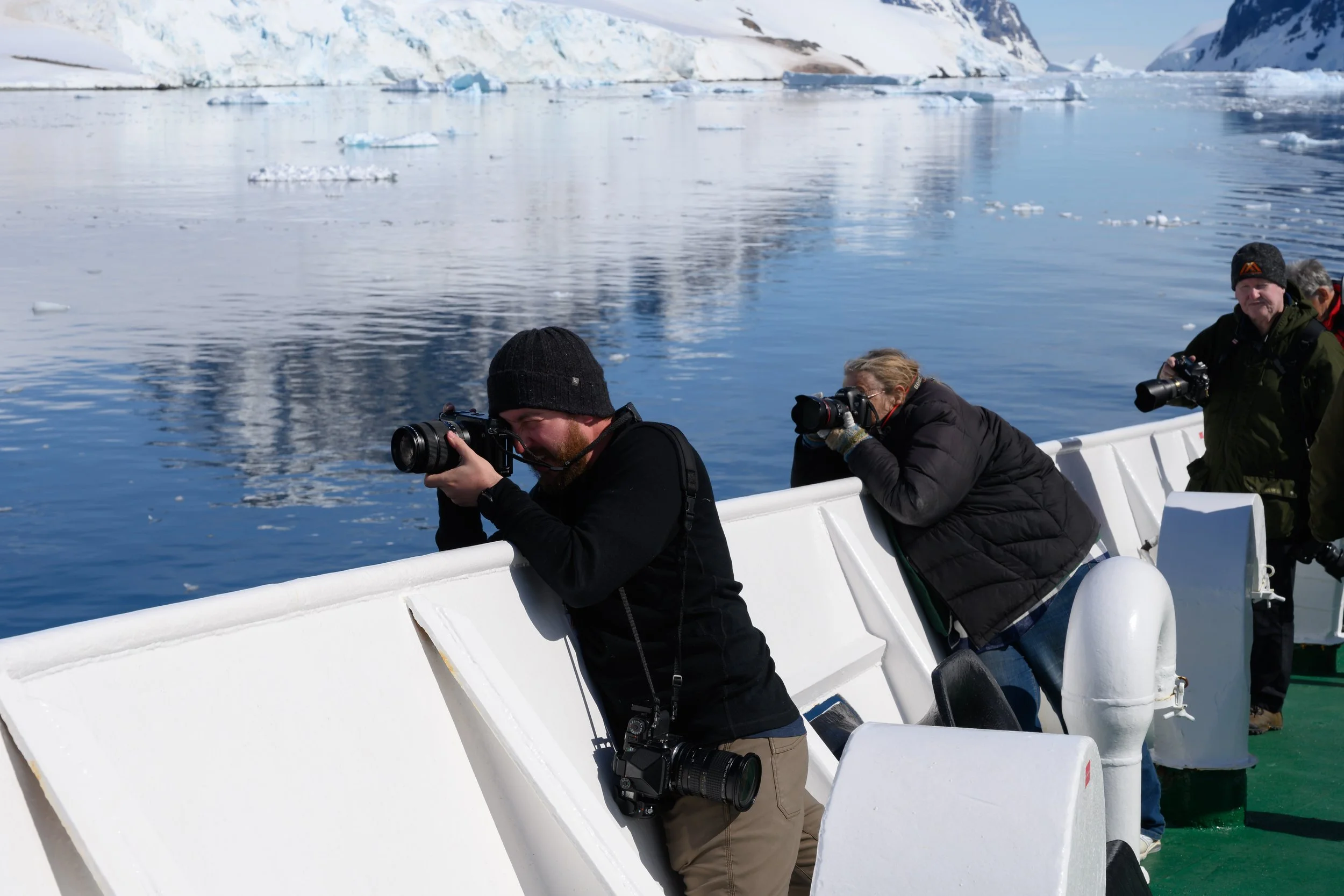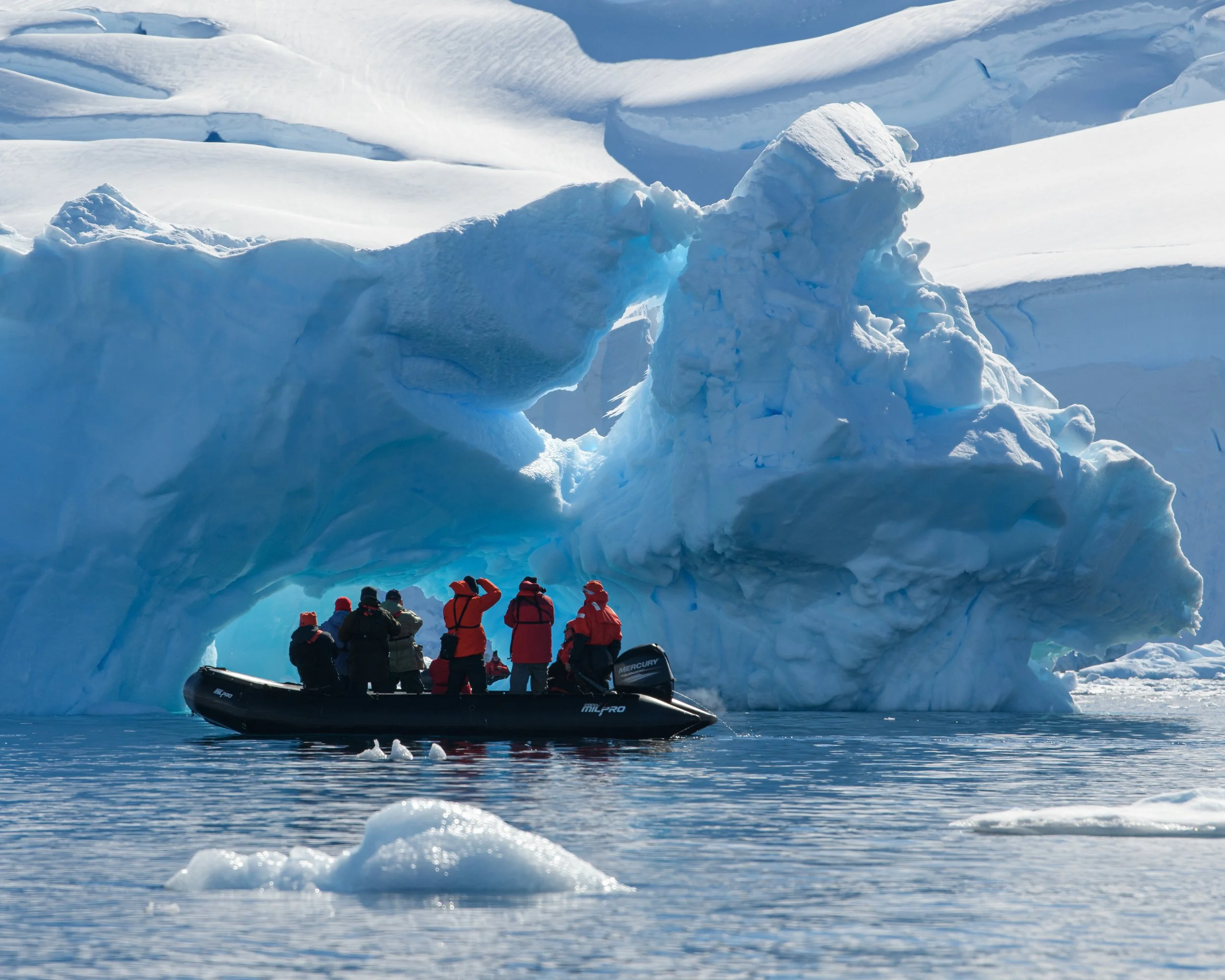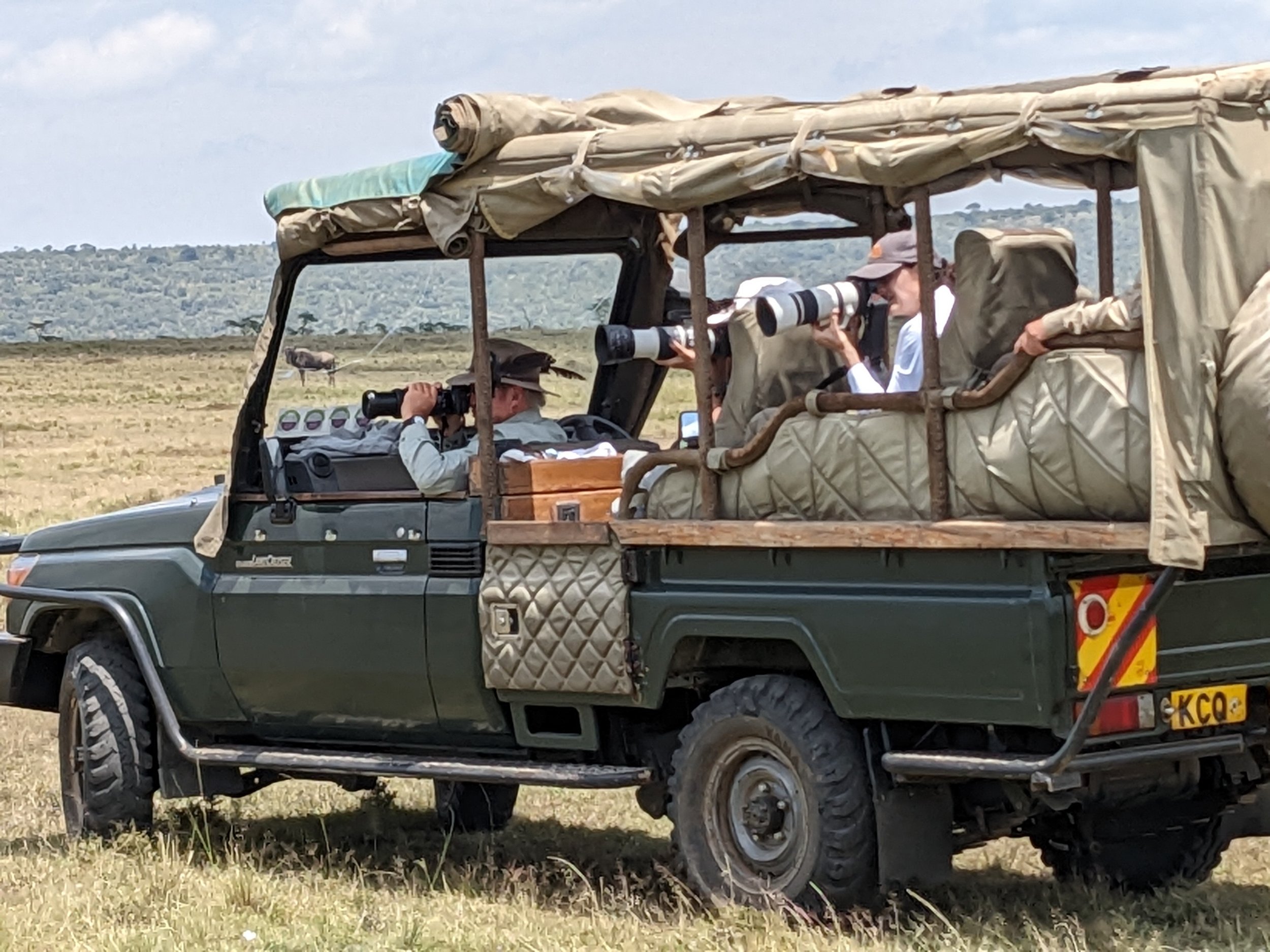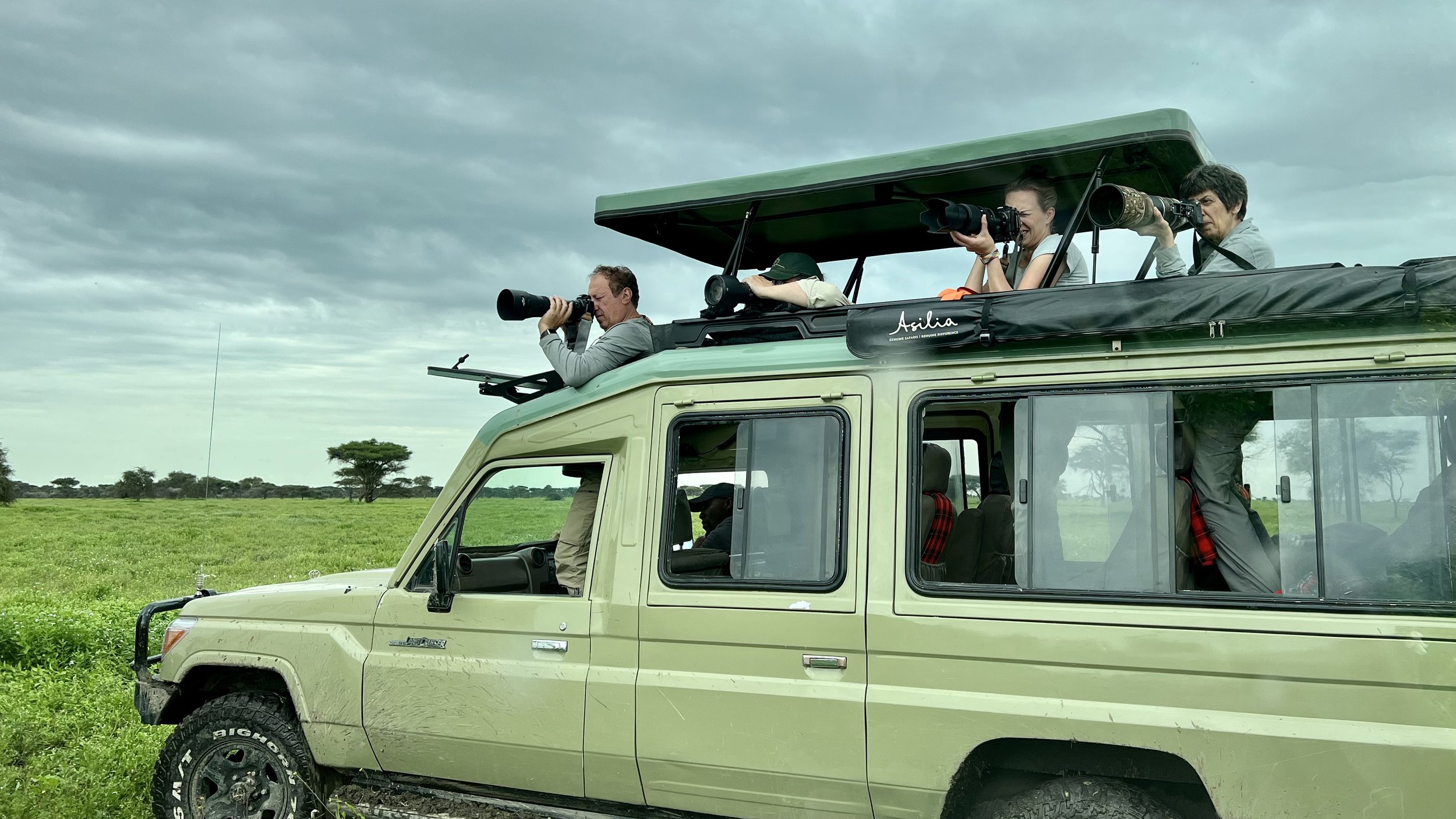How Can You Successfully Photograph From A Vehicle Like a Boat or safari vehicle?
Photographing from a moving vehicle may seem like an insignificant topic to some, but I have seen this situation ruin photographers’ photos on many occasions.
Sometimes the only way to access certain wildlife is by a vehicle, ship, or boat. While it expedites and in most times, offers better wildlife opportunities, it also poses its own set of challenges that I want you to be aware of.
Obviously, this is true for marine wildlife, but there are also shore-based birds and mammals like grizzly bears and polar bears where photographing from the water is the easiest, or only way to see or access them.
While on a ship, it may be tempting to bring out your tripod for stabilization. Don’t bother, if the engines are running. A tripod will transfer the vibrations from the engine directly to the camera, often confusing the camera’s vibration reduction capabilities. Shooting handheld is the solution to isolate from engine vibration. This same advice actually applies to land vehicles. Don’t use a vehicle for lens support when the engine is running and vibrations can be directly transferred to the camera.
Waves can be very problematic for photography. I’ve been on a zodiac in Arctic Norway photographing orcas where the waves were rolling the boat up-and-down and side-to-side. Keeping the subject in-frame and in-focus was nearly impossible, and none of the horizons were straight. The waves even crashed over the bow and seawater ruined one of my cameras.
With significant wave action, sometimes the solution is to simply give up your photography and enjoy the wildlife. On a recent trip, our boat was rolling significantly in some really bouncy seas. I attempted to photograph birds in flight but gave up when I realized that the motion of the boat exceeded my ability to focus on the birds and keep them in the frame.
Another tip to help increase the number of keepers can be to increase your shutter speeds beyond those that you would normally need. Think of the motion. The animal is moving, the boat is moving, and you might be moving to brace yourself. All this movement amplifies the need for faster shutter speeds than you normally would use.
When photographing from a vehicle, it’s always best to turn off the engine before you take your photos in order to eliminate the major factor that causes movement. That subtle shake that an engine produces.
But that is not the only movement that can be detrimental to photography when in a vehicle. If you are photographing with people, and for those that have been on an African safari can attest, any slight movement by someone in a vehicle can ruin a photo, especially when photographing with longer telephoto lenses.
The keys to your success in this group situation are Communication and Teamwork. In my experience, it’s best to have everyone move to a comfortable position, get the camera gear they need, and have everyone shoot together. If someone wants to move, they verbalize the need to move to the group before they adjust and ruin someone’s shot that is already taking photos.
This is not always going to work perfectly, but having everyone’s buy-in on this strategy ahead of time will eliminate most, if not all of the movement issues.
Another tip for shooting from a vehicle is to have a bean bag to rest your lens on. With the engines off and the animals in sight, it can be beneficial for reducing camera shake while your body is in an uncomfortable sitting or standing position. We talk about bean bags in the accessory section and will list out our preferred bean bag in a PDF that you have access to.
My last advice on photographing from a stationary vehicle. It can also be used as a blind. Any wildlife that is accustomed to vehicle traffic will not think twice if they see a vehicle. But the moment you step out of that vehicle, the animal or bird will see you and flee the area. Have you noticed that when you have been out taking photos?
If you are going to get out of the vehicle, and it is safe to do so, get out on the opposite side of the wildlife. Be quiet, move slowly, and position yourself on the hood or trunk to brace yourself. That way, you don’t have to fumble with a tripod and miss any potential photographic opportunities.
Let’s review:
Photographing from a moving boat can be a challenge. Never rest against the boat to brace yourself. It introduces camera shake that you might not notice at the moment you're taking photos.
Consider using a faster shutter speed to offset all of the movement you are experiencing at the moment you are taking your images.
When photographing from a land vehicle, turn off the engines to take your photos. When traveling with a group, teamwork and communication will be your keys to success.
Use a bean bag for additional support when photographing from a vehicle.
A parked vehicle can be used as a blind to shield yourself from animals that you see. Just make sure you are safe to take photos from your car if you see any wildlife in your travels.
To read more about my workshops – click here




